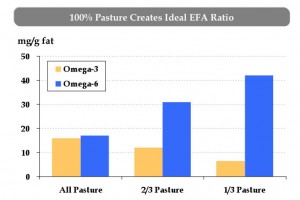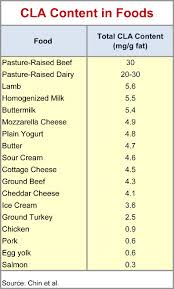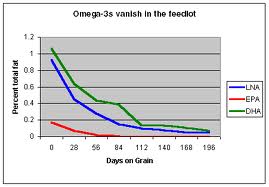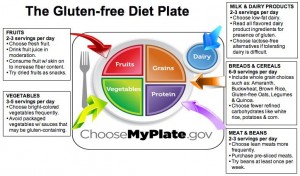The Gluten Free Diet
According to Dr. Alessio Fasano, the number of people diagnosed with celiac disease (gluten intolerance) has doubled approximately every three years since 2003 in the United States. Celiac disease is an autoimmune digestive disease that damages the villi of the small intestine and interferes with absorption of nutrients from food. Essentially the body is attacking itself every time a person with celiac consumes gluten. Up to 3 million Americans have celiac disease, but only about 17 percent of them are accurately diagnosed?
Nutritional Supplementation
As a result of malabsorption of nutrients in celiac disease, deficiencies can result in calcium in vitamins and minerals like iron, folic acid, vitamin D, and (rarely) B vitamins, and zinc. Ask a registered dietitian for advice on a gluten free diet that includes the recommended levels of these nutrients. Consuming nutrient dense foods is highly beneficial. At the very least, taking a multivitamin may be necessary to replenish these nutrients.
New Research
A gluten free diet high in omega-3 and omega-6 fatty acids have been shown to increase survival in people with autoimmune diseases, most likely due to the

ability to reduce inflammation. The EPA and DHA contained in the fatty acids can be converted into natural anti-inflammatory substances called prostaglandins and leukotrienes that help the body decrease inflammation and pain.
Also increasing intake of omega-3 fatty acids may help reduce inflammatory processes in celiac disease.
Conjugated Linoleic Acid
Recently researchers have concluded that conjugated linoleic acid (CLA) offers beneficial effects against the reduction of key intestinal cytoprotective defenses. CLA is a fatty acid made from linoleic acid, an omega-6 fatty acids. This study indicates a new nutritional approach for the treatment of celiac disease and a gluten free diet.
The new study has shown that suplementing CLA may help fight the oxidative stress associated with Celiac Disease – an autoimmume disease which causes the body’s immune system to attack itself, and affects the gut.
If you’re just starting with a gluten-free diet, it’s a good idea to consult a dietitian who can answer your questions and offer advice about how to avoid gluten while still eating a healthy, balanced diet.
Gluten Free Diet
Many healthy and delicious foods are naturally gluten-free:
- Beans, seeds, nuts in their natural form
- Fresh eggs
- Fresh meats, fish and poultry in their natural form
- Fruits and vegetables
- Most dairy products
Food Therapy
While consuming a gluten free diet, look for foods highin CLA , Omega 3’s and other key nutrients. If you consume beef, consider only grass-fed beef that is hign in CLA, vitamins and Omega 3..
- You’ll find yourself getting 500-800 milligrams of CLA (conjugated linoleic acid) from a 4-ounce
 serving of grass-fed beef. This amount is approximately two to three times greater than the amount found in non grass-fed beef. However, CLA is unique in its chemical structure, and this uniqueness is associated with an increasing list of health benefits, including immune and inflammatory system support, improved bone mass, improved blood sugar regulation, reduced body fat, reduced risk of heart attack, and maintenance of lean body mass. Grass-fed beef also contains greater amounts of vaccenic acid than conventionally fed beef. Various bacteria in our digestive tract are able to convert vaccenic acid into CLA once we’ve consumed grass-fed beef, and this process can further increase the practical amount of CLA that we receive from grass-fed animals.
serving of grass-fed beef. This amount is approximately two to three times greater than the amount found in non grass-fed beef. However, CLA is unique in its chemical structure, and this uniqueness is associated with an increasing list of health benefits, including immune and inflammatory system support, improved bone mass, improved blood sugar regulation, reduced body fat, reduced risk of heart attack, and maintenance of lean body mass. Grass-fed beef also contains greater amounts of vaccenic acid than conventionally fed beef. Various bacteria in our digestive tract are able to convert vaccenic acid into CLA once we’ve consumed grass-fed beef, and this process can further increase the practical amount of CLA that we receive from grass-fed animals.
- Some recent studies show up to 3.5 grams of total omega-3 fats in 4 ounces of grass-fed beef. That

Omega -3’s diminish in beef while being fed grains. level would provide you with 100% of the daily requirement. Most of the omega-3 content of grass-fed beef comes in the form of alpha-linolenic acid, or ALA. However, grass-fed beef also typically contains small-to-moderate amounts of other omega-3s, including EPA (eicosapentaenoic acid) and DHA (docosahexaenoic acid). In all cases described above, grass-fed beef contained greater amounts of omega-3s (for ALA, EPA, and DHA) than conventionally fed beef.
Children
A recent study of children and teens in the U.S. has shown that individuals in these age groups depend on their intake of beef for the following key nutrients and in the following amounts.
- Vitamin B12: beef provides 14-21% of this B vitamin to U.S. children and teenagers
- Zinc: 13-19% of this mineral is provided by beef to these age groups
- Vitamin B3: U.S. children and teens receive 6-10% of their vitamin B3 from beef
- Vitamin B6: 5-8% of this vitamin is provided by beef to these age groups
- Iron: up to 8% of dietary iron is provided to these age groups by beef
Additionally, beef is an important source of potassium, phosphorus, and protein to these age groups in the U.S. population.
Sources:
- Molecular Nutrition and Food Research; Vol 55 Issue S2. DOI: 10.1002 / mnfr.201100295 “Conjugated Linoleic acid protects against gliadin-induced depletion of intestinal defenses”.
- J Pediatr Gastroenterol Nutr. 2006 Sep;43(3):318-323.


